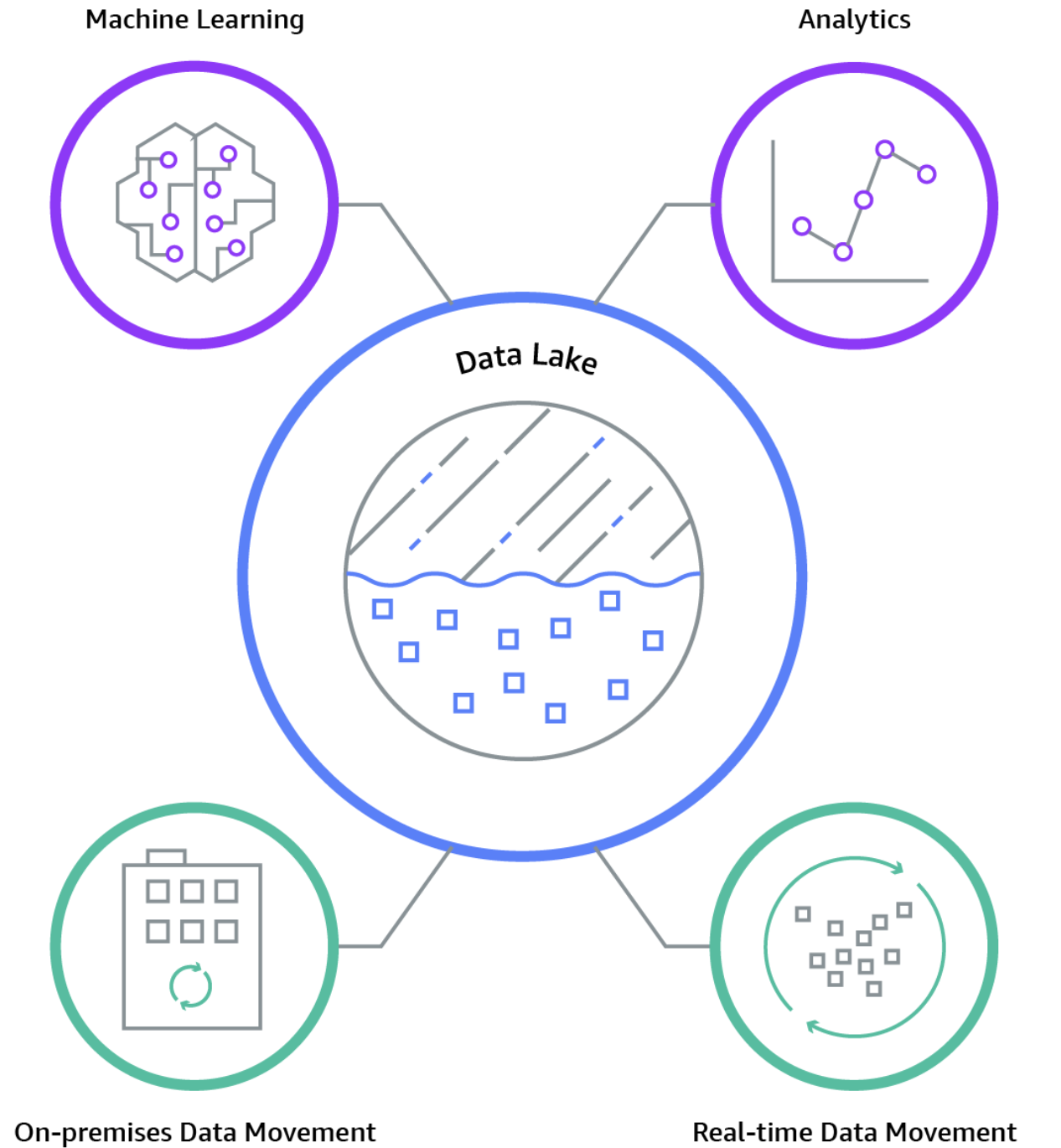
Data lakes are vital for storing and retrieving big data— but what is a data lake, and why should content strategists care?
Companies that use data lakes outperform their competition by 9% in organic revenue growth. Here’s a deeper look at where data lakes belong in content marketing and how you can best implement them in your strategy.
Key Takeaways:
- A data lake stores raw data in a centralized location.
- Data lakes work best alongside data warehouses for retrieving and analyzing information.
- Content strategists can use data lakes for deeper, real-time insights into their audience.
What is a Data Lake?
A data lake is a centralized storage for keeping big data in its raw format. Later, you can easily pull the pure data out for analysis and other uses.
Data Lake vs. Database vs. Data Warehouse
Here’s how a data lake compares to a database and a data warehouse:
- Data lake: A mass storage location for all your pure data. Differs from the other two because it doesn’t organize or process the data.
- Database: Stores smaller data sets in a processed format that you can analyze and use, such as financial reports or website analytics.
- Data warehouse: Works with big data too complex for a database to handle. Therefore, it has more complex processes and storage methods for managing your data.
 Image from BMC
Image from BMC
Data Lake Example in Simple Terms
Data lakes are complex to understand. Consider this simple illustration of a data lake to better visualize how it works.
First, picture data as the products in a store. A database would be small supercenters that display limited products on organized shelves for single households to purchase. Meanwhile, data warehouses are warehouse-style retailers that offer large quantities of products on larger displays – often for people to purchase in bulk or for big events.
However, a data lake is the retailer’s storage room where all the products sit when they first arrive, still in their original boxes, before employees unpack, process, organize, and display them.
A data lake works best alongside a data warehouse as it gives you access to your data in its original format but still lets you organize the data. However, a database won’t usually need a data lake as it only handles a small amount of data.
The Importance of Data Lakes
We live in a society that is built on data which helps companies:
- Make more informed decisions
- Track consumer behavior and actions
- Share relevant information
- Build a personalized experience
- Analyze trends and create an accurate forecast
- Create a unified customer view across platforms
Internet users generate over 2.5 quintillion bytes of data every day. However, most businesses don’t feel prepared to handle such a large amount of data. In fact, 95% of companies said a significant problem they face is managing unstructured data.
That’s why businesses need data lakes for storing that vast amount of information alongside data warehouses for processing and organizing it into usable datasets.
How to Use a Data Lake to Improve Your Content Strategy
Let’s explore some specific ways you can use a data lake to make a greater content marketing impact.

Image from Amazon
1. Store Real-Time Data
A data lake has a larger capacity to hold information than a database— which means you don’t have to be as picky about what information to keep or discard. Therefore, you can collect and store information in real time.
This allows you to make content decisions based on the most relevant information. Real-time data also means you can be one of the first to respond to content trends, positioning you as a leader in your industry.
2. Experiment with Flexible Data
Data lakes don’t restrict you to only analyzing processed data. With a data lake, you can always go back to the source and use that raw data for different processes and analytics. This flexibility helps you find unique insights about your audience you may have missed by only examining the analytics available in a database.
3. Use a Data Warehouse
A data warehouse will help you organize your data lake. Additionally, it will give you advanced consumer analytics that will help you understand your audience better. However, you will still want to use a data lake so that you have plenty of room for storing your data in its raw form before processing it in a warehouse.
4. Remove Siloed Data
Ununified content because of siloed data is often a challenge for medium to large-sized businesses as vital data is spread across all your departments. Your data lake will collect that data into one location— eliminating those harmful siloes. This lake will allow you to make the most educated content decisions based on information from more than just your marketing team.
5. Make Informed Decisions
The data in your lake will give you deep insights into customer behavior such as:
- Your audience’s searches
- Activities on your website and social sites
- How your content influences sales
- What topics receive the most interactions
- Your audience’s demographics
How to Create a Data Lake
A data lake is a method and structure of storing raw data rather than a specific platform. It’s often built around cloud-based storage where multiple people can share and access the data. To build the lake, IT specialists or business managers will replicate raw data from original data sources into the cloud storage to build their lake.
When you build a data lake, be sure it has diverse yet secure interfaces for uploading and retrieving information. You should also establish a way to search and catalog your data for retrieving information directly from the lake— even if you are using a data warehouse.
Create Smarter Content with Data Lakes
Are you ready to reimagine how you create content? Start using more data insights to understand what your audience wants, so you can deliver content that consistently converts. The best place to start is through data lakes that can store more marketing data in real time.
Contact us to learn how you can make content smarter with data lakes.

